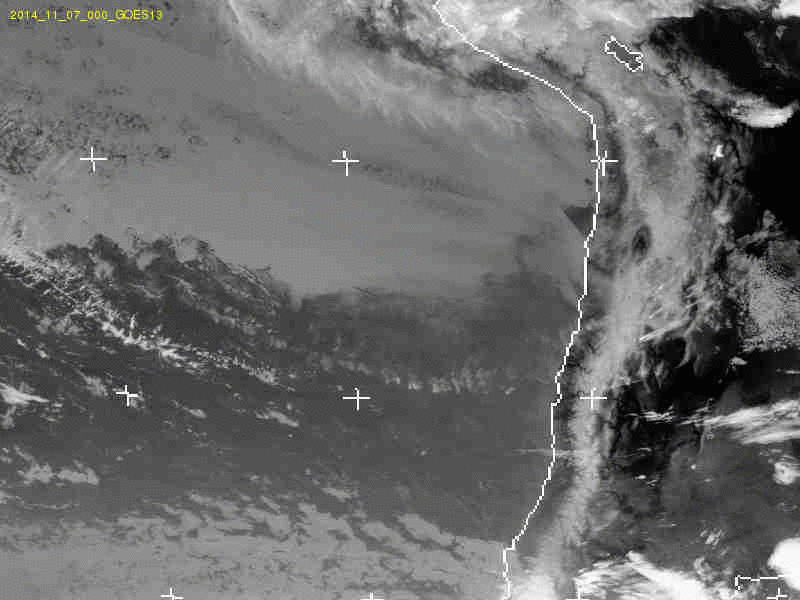At the beginning of the 60´s, different independent groups of theoretical physicists arrived to the same conclusions: all coincided on the characteristics that a new type of object should have, if its low mass was sufficiently low and possessing a temperature that would not allow it to fuse hydrogen in its nucleus in a stable way. Nevertheless it was only around 1995 that these type of objects were confirmed observationally (three groups working independently at the same time) and that these theoretically predicted objects did really exist around us. Since then, the availability of instruments that observe in the near, far and mid range infrared (more adequate for observing sub stellar objects) has enabled a veritable explosion of detections of them, usually with temperatures so low as to resemble those of planets. So, fundamental questions like "which are the physical processes that dominate the formation of these objects, or what are the main atmospheric characteristics of the colder sub stellar objects? await yet a definitive answer. In the Instituto de Física y Astronomía we work on giving an observational answer to these and other questions related to brown dwarfs and isolated objects with planetary mass.
The investigators in this area cover:
Subestellar Objects around Evolved Stars
Investigators:
Professors: Matthias Schreiber - Radostin Kurtev - Nikolaus Vogt - Maja Vuckovic - Amelia Bayo
To date more than thousand exoplanets have been detected in the neighbourhood of the Solar System but the precise mechanisms by which planets are formed are still largely unknown. The situation is particularly worrying for giant planets for which two very different formation theories exist, namely core accretion and gravitational instabilities. Planets are formed in circumstellar discs around young stellar objects and the best places to look for signs of planetary formation are the so called "transition" discs. We study the physics of transition discs and the planet formation process using theoretical models as well as observations with ALMA, SPHERE and sparse aperture masking at the VLT, Gemini/GPI, and the Magellan telescopes. We closely collaborate with the compact binary group (also led by M.R. Schreiber) and are part of the Millennium ALMA Disk nucleus.
Investigators:
Professors: Matthias Schreiber
Postdocs: Claudio Cáceres - Héctor Cánovas
Students: Adam Hardy (PhD) - Daniela Iglesias (PhD)
Former members:
Gisela Romero (Universidad de La Plata, Argentina) - Marianna Orellana (Universidad de La Plata, Argentina)
Despite their importance for astrophysics in general, the formation and evolution of close compact binary stars is far from well understood. To explain their short separations, close compact binaries are thought to form through common envelope evolution, a spectacular phase of binary star evolution where both stellar components orbit within one gaseous envelope. Sad but true, current models are unable to predict the detailed outcome of common envelope evolution. This is probably the largest uncertainty in present day binary population models which severely limits our understanding of objects as important as for example supernova Ia progenitors.
To progress with this situation we perform observational and theoretical population studies of white dwarf binaries with a special emphasis on deriving observational constraints on models of common envelope evolution:
- PCEBs from SDSS (link to www.sdss-wdms.org)
- Reconstructing the evolutionary history of PCEBs
- The RAVE/Galex survey of WD plus FGK stars
- High precision observations of eclipsing PCEBs with X-shooter
Investigators:
Professors: Matthias Schreiber
Postdocs: Steven Parsons (PhD.) - Mónica Zorotovic (PhD.)
Students: Daniela Iglesias (PhD student) - Carolina Agurto (MSc.) - Guillermo Retamales (MSc.) - Miguel Fernandez (MSc.)
Previous members:
Alberto Rebassa-Mansergas (currently post-doc in China) - Odette Toloza (currently PhD student in Warwick, UK)
Cataclysmic variables (CVs) are binary stars where the less massive component, a late-type (K-M) main-sequence star, transfers matter to the more massive component, a white dwarf. As such they represent a subclass of compact binaries. These objects show a large variety of phenomena, and their study bears relevance for several other areas of research, such as binary formation and evolution, accretion discs, or supernova progenitors.
Classical novae represent a subclass of CVs. The accumulation of a certain
critical amount of material on the white dwarf causes a thermonuclear explosion on its surface. In its course, material is expelled from the white dwarf into the interstellar medium as a shell. This phenomenon is known as a 'nova eruption'. Since the explosion does not destroy the binary system, the accretion process recommences within one or two years. Thus, it is reasonable to assume that the nova eruption represents a recurrent phenomenon and that it forms part of the evolution of most, if not all, CVs.
At the IFA we currently study the following aspects of the physics of CVs: - the connection between the group of classical novae and other subtypes of CVs. We have initiated a search to recover former novae in order to significantly enlarge the sample of such objects. This will allow for a statistically significant comparison of the properties of the 'post-novae' with those of 'other' CVs, and ultimately reveal both the importance of certain physical parameters on the nova eruption and the effect of the latter on them.
- the long-term photometric behaviour of specific objects with the goal to gain information from their variability on the processes in their accretion
discs.
Investigators:
Professors: Claus Tappert - Dr. Nikolaus Vogt - Dr. Matthias Schreiber





